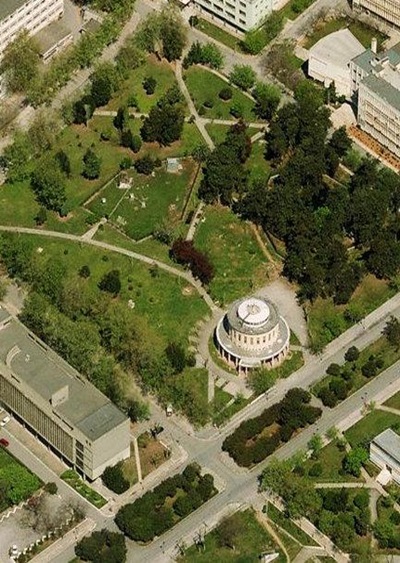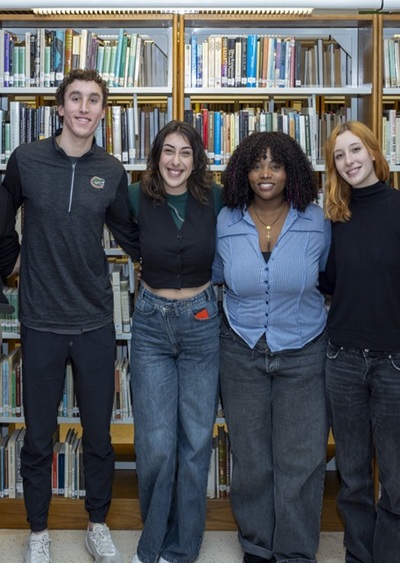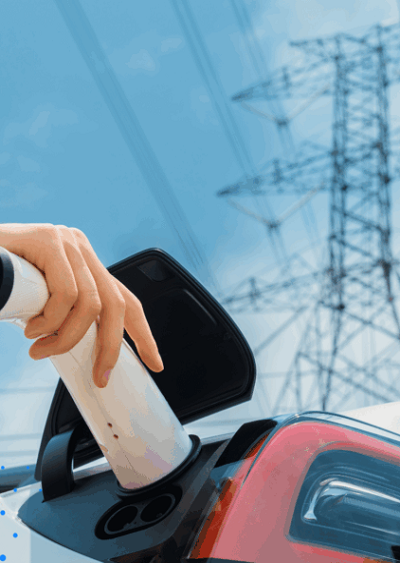
The Inter-institutional Postgraduate Programme of Studies of the University of Athens, “Oceanography and Management of the Marine Environment“, has as its subject matter Oceanography, which includes all scientific disciplines involved in the research and management of the wider marine environment.
An important member of the project is the Associate Professor of Marine Biology Dionysis Raitsos (Department of Biology, Department of Zoology-Marine Biology of the University of Athens), having completed his PhD thesis at the University of Plymouth and with over 22 years of experience. His research focuses on the observation of marine biology and oceanography, and the biophysical changes occurring in different ecosystems of the world (Mediterranean, Red, North, and Black Seas, Arabian Gulf, as well as in the World Ocean, Atlantic, Indian and Pacific).
Since 2019, when he was elected Assistant Professor at NKUA, he has published more than 34 papers in the most prestigious international scientific journals, while in 2019 he established the Oceanography and Earth Observation research group, again focusing on the study of marine biology in relation to climate change and local environmental conditions. After all, as Dionysis Raitsos himself states in an interview with Days of Art in Greece, “the sea is one of the least explored worlds on the planet“.
In your PhD thesis you studied the scientific subject of marine remote sensing. Explain to us what exactly is the scientific field you have been involved in and what it means for the further development of the science you are treating.
Marine remote sensing is the science that allows us to “observe” the oceans from space, via satellites. My PhD focused on the study of phytoplankton organisms and total biomass, as phytoplankton is fundamental to the marine food chain and a regulator of global climate. The thesis laid the foundation for a broader approach to monitoring and understanding marine ecosystems under the pressure of climate change.
You have been a research observer of the earth at the Plymouth Marine Laboratory. Tell us a little bit about this collaboration.
My collaboration with Plymouth Marine Laboratory (PML), one of Europe’s leading research centres for marine research and marine remote sensing, has been crucial. I worked on international projects aimed at understanding long-term changes in the oceans and how these relate to climate variability. There I had the opportunity to interact with an excellent team of scientists and develop innovative methods to monitor marine biodiversity.

“The sea is one of the least explored worlds on the planet” – Dionysis Raitsos
You are a collaborator in the field of Satellite Oceanography at ΗCMR. We would like you to explain the purpose and results of these surveys.
I worked at HCMR for three years, and we have developed a strong collaboration between the University and various institutes of HCMR. We have joint PhD students, teach a course together in the interdisciplinary Master’s programme in Oceanography and participate in joint European research projects. Our team uses satellite data to study the physical, biological and chemical parameters of the seas. By monitoring phenomena such as phytoplankton blooms, marine heat waves and sea surface temperature, we can study how the marine ecosystem responds to various anthropogenic pressures (climate change, pollution). This research has direct applications in fisheries and aquaculture, in water quality and in understanding the impacts of climate change.
What might the development of AI mean for the science of oceanography?
Artificial Intelligence (AI) is revolutionising oceanography. Through machine learning we can now analyse vast amounts of satellite and in situ data, make predictions and detect patterns that are not easily detectable. We are already working on algorithms that detect blooms in the oceans or even estimate the size of the phytoplankton community from space.

“A work that I have always liked is Vincent van Gogh’s painting, “The Starry Night” (1889) – looking at it, I feel as if I am observing the water circulation on the surface of the ocean, with cyclonic and anticyclonic vortices.”-Dionysis Raitsos
How many secrets are the oceans hiding from us? What do they tell us about the future?
The sea remains one of the least explored worlds on the planet. Much of the biodiversity, geological processes and climatic mechanisms hidden in the great depths are still unknown. Understanding these mechanisms is critical for predicting future climate change and natural phenomena.
A more personal question: What is your background and what factors led you to pursue marine science?
I grew up near the sea, in Kineta, where I spent four months a year with my grandparents. My father and grandfather had a small boat, and I was in daily contact with the marine environment. From a young age I was passionate about Jacques-Yves Cousteau’s documentaries, but also about the poems of Nikos Kavvadias.

“Artificial Intelligence (AI) revolutionizes Oceanography”-Dionysis Raitsos
Is there a work of art that has defined your scientific and aesthetic choices?
A work that I have always liked is Vincent van Gogh’s painting, “The Starry Night” (1889) – looking at it, I feel as if I am observing the water circulation on the surface of the ocean, with cyclonic and anticyclonic vortices







Leave A Comment